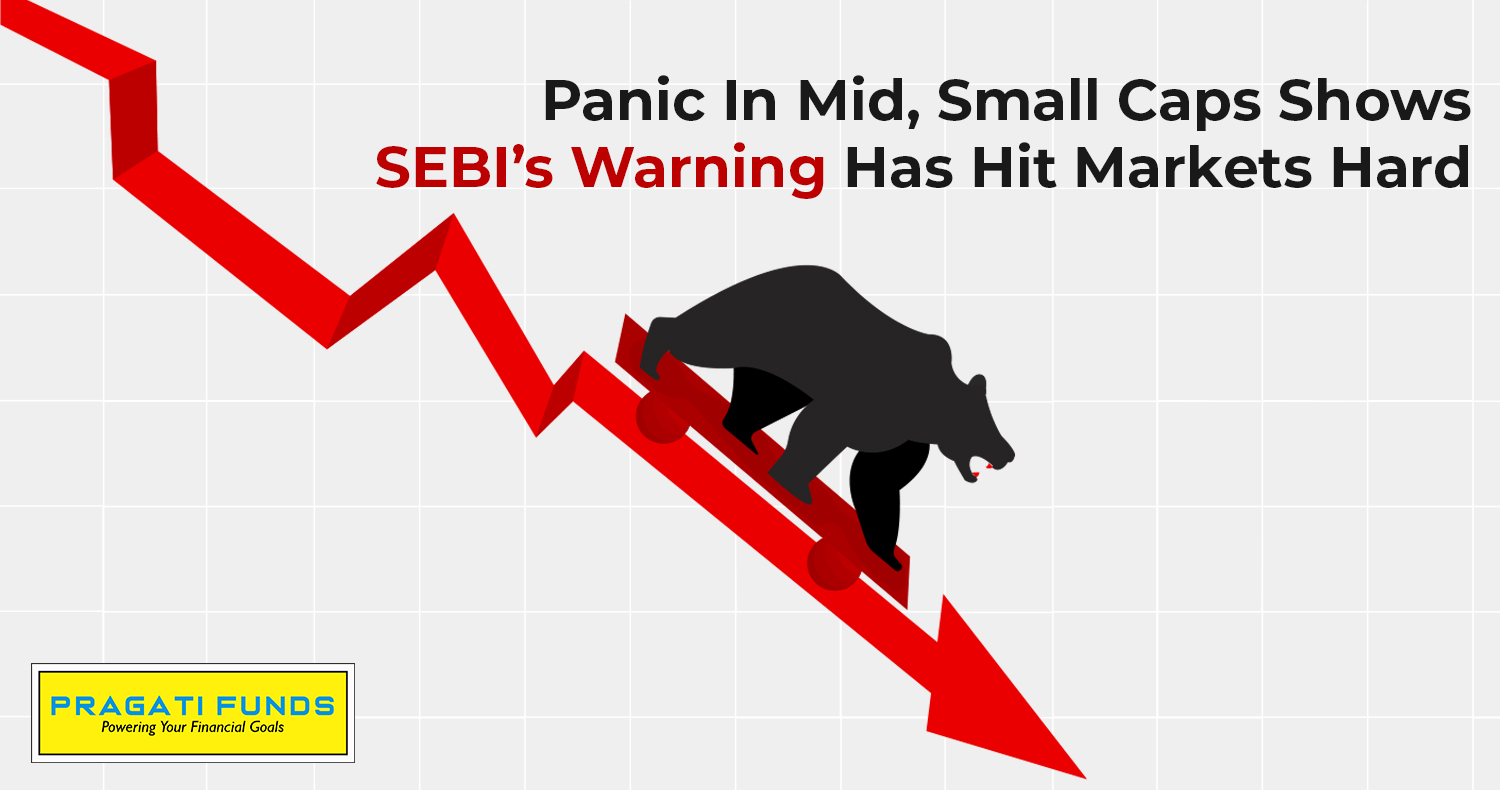It has been two weeks since SEBI flagged the rising froth in mid and small-cap stocks and directed asset management companies (AMCs) to institute policies and protect investor interests in the event of a correction.
As expected, the impact is playing out in spurts. This week, on Wednesday, mid, small, and micro-cap stocks corrected by as much as 5 percent on a single day. In fact, the panic also spilled over to blue chip stocks as the Nifty 50 corrected by almost 550 points from the day’s high.
Ahead of the bloodbath, we had seen a few AMCs coming out with rules around curbing
lumpsum and SIP investments into the mid and small-cap space. The
SEBI chief had also grabbed headlines once again. This time, it appears to be regulations around mandatory stress-testing which made investors panic.
What are SEBI’s concerns?
The mid, small, and micro-cap space had been witnessing fervent activity. Rallies upwards of 60 percent had pulled in fund-flows worth more than Rs 60,000 crore into funds focused on such stocks in the past one year, even as large-cap funds suffered outflows during the period. Valuations of smaller companies reached unprecedented highs and the inherent low liquidity in these stocks started raising eyebrows. We have even had a few cases of illegal operator activity and price manipulation in such stocks.
The lethal combination of low float, low liquidity, heavy inflows, high valuations, and increasingly risky herd-mentality in small stocks led to SEBI taking notice. The regulator guided AMCs to institute policies with the objective of protecting investor interests. While each AMC has been allowed discretion with regard to the specifics of the policies, they should be aimed at making sure the inflows are in line with what the float and liquidity of these stocks can comfortably support.
While the above policies are voluntary and discretionary, stress-testing disclosures have been made mandatory by SEBI. While
mutual funds maintain around 5 percent of their assets in cash to meet liquidity needs and have dry powder handy in case the market presents buying opportunities, the concern is that in the event of significant redemption pressure, this cash may not be sufficient. In case of a negative trigger, the redemption pressure could force mutual funds to sell off holdings to generate cash and meet redemption requests. Such a selloff by institutions in stocks with limited liquidity would add further pressure on mid and small-cap stock prices, thereby creating a vicious cycle of even higher redemption pressure. It could even lead to widespread panic across all segments of Indian equities. On Wednesday, we caught a glimpse of the bloodbath this could potentially cause.
To prevent such a situation from building up, SEBI has directed AMCs to disclose how many days it would take them to liquidate their holdings in adverse market conditions.
What does this mean for stock markets?
It is important to note that SEBI has simply enhanced disclosure norms so that investors are able to make more informed decisions. That is the only tangible mandatory change introduced by SEBI – more transparency. If investors are aware of how illiquid the different mutual fund portfolios are, as would be clearer from the mandated stress-tests, investors would be better placed to select mutual funds based on the amount of liquidity risk they are comfortable with taking on. So, over the long term, more transparency is going to be a positive for stock markets.
But the sharp negative knee-jerk reaction seen this week was most likely in response to the SEBI chief’s comments around “bubbles”. The carnage on Wednesday was despite institutional investors pumping in funds worth almost Rs 4,500 Crore. This goes to show that the panic was only among retail investors and prop desks. Moreover, considering that SEBI’s moves are focused on the illiquid mid and small-cap space, the reaction seen in large-caps was irrational and unwarranted.
The fact that much of the correction was reversed the following day shows that markets are extremely jittery. The persistently tense macroeconomic and geopolitical climate, combined with sky-high stock market valuations have made investors trigger-happy. Any trigger can cause deep and at times, irrational tumbles. This is further exacerbated by the higher participation of retail investors, who have been known to be easily moved.
What should investors do?
We are living in tense times where geopolitical conflicts are showing no signs of abating. These could stoke supply-driven inflation and push monetary easing plans further down the road, leading to low margins for businesses, given that demand is not roaring yet. Meanwhile, upcoming elections have brought in policy-uncertainty. Add to these high stock market valuations and it is no surprise that Indian equities have turned significantly more volatile.
But it is important to remember that India’s long-term growth story is still intact as indicated by our resilient economic growth. So, any steep corrections which seem to be based in irrational panic, present great opportunities to load up on quality stocks at attractive valuations. Of course, this should be done in tranches because more volatility could be around the corner, and investors should keep some powder dry to make the most during such troubled times.
Unlock your stock market potential today! Call +91 97254 10042 or visit www.pragatifunds.com for expert assistance.


